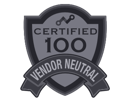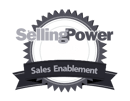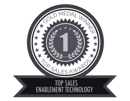When managing workflows in Membrain, you may find yourself needing to update your processes to keep up with evolving team structures, adopt new methodologies, or improve efficiency. Whether you choose to refine an existing process or start fresh, understanding the impact of each approach will help ensure a smooth transition.
This guide explores the benefits and limitations of both options, helping you make informed decisions. With careful planning, you can implement changes effectively while preserving valuable data.
General Guidelines
When configuring a Process, any changes you make will remain in "draft mode" until the process is published. This ensures you can review and refine your changes before they take effect.
If you decide to undo any published changes, you can always revert to a previous version using the "Process Change History". This provides a safeguard to recover earlier configurations.
Create New Process
You can create a new process from scratch or by copying an existing one and tailoring it to your liking.
Benefits
- This option is ideal for major changes that will impact how your team works, such as implementing a new methodology, restructuring workflows, or adding/removing multiple steps and/or stages.
- It ensures a clean transition, allowing your team to finish ongoing projects with the old process while starting new ones under the new process, after a specific appointed date. Once the new process is in place, the old one can be archived, ensuring that any new projects created in the future are tied to the new process.
- This approach makes it easier to analyze process efficiency and overall performance. By creating a clear distinction between the old and the new process, you can compare key metrics such as win rates, sales cycle length, deal value and more, to assess the impact of your changes. These insights will help you identify areas for improvement.
Limitations
- All references to the old process in your Membrain instance will need to be updated to point to the new process. This could be a time-consuming task, depending on how many objects reference the old process. Some key objects that may require adjustment include:
- Filters and Custom Views: In modules you have access to such as Prospecting, Active Pipeline, Account Growth, Tickets and Flows
- Analytic Views: Standard Analytics and Dashboards graphs
- Content Hub: Content Contexts
- Process Configuration: Process Steps, Events and Outcomes (all modules), Graph, Goal and Timeline Components (in Account Growth and Flows)
- User Management: Goals and User Permissions Groups
- Data Management: Automated Imports, Automations and Membrain Forms
- Admin: Email Autosave Settings and Activity Autorelate Settings
- Integrations: HubSpot, Active Campaign, Mailchimp, Constant Contact, Salesforce and Zapier
- Elevate: Coaching Templates
Edit Existing Process
Benefits
- It's suitable for making small adjustments and performing routine maintenance.
- Unlike the "Create New Process" option above, this option doesn't require any manual adjustments to the objects in your Membrain instance where the existing process is referenced. That might be a huge time-saver, especially if you have lots of objects where the process is referenced.
Limitations
Get Started Today!
If you need guidance, our team is here to help. We offer training and services to support you through the process, ensuring you get the most out of Membrain. For more information, please reach out to your Customer Success Advocate or support@membrain.com.





